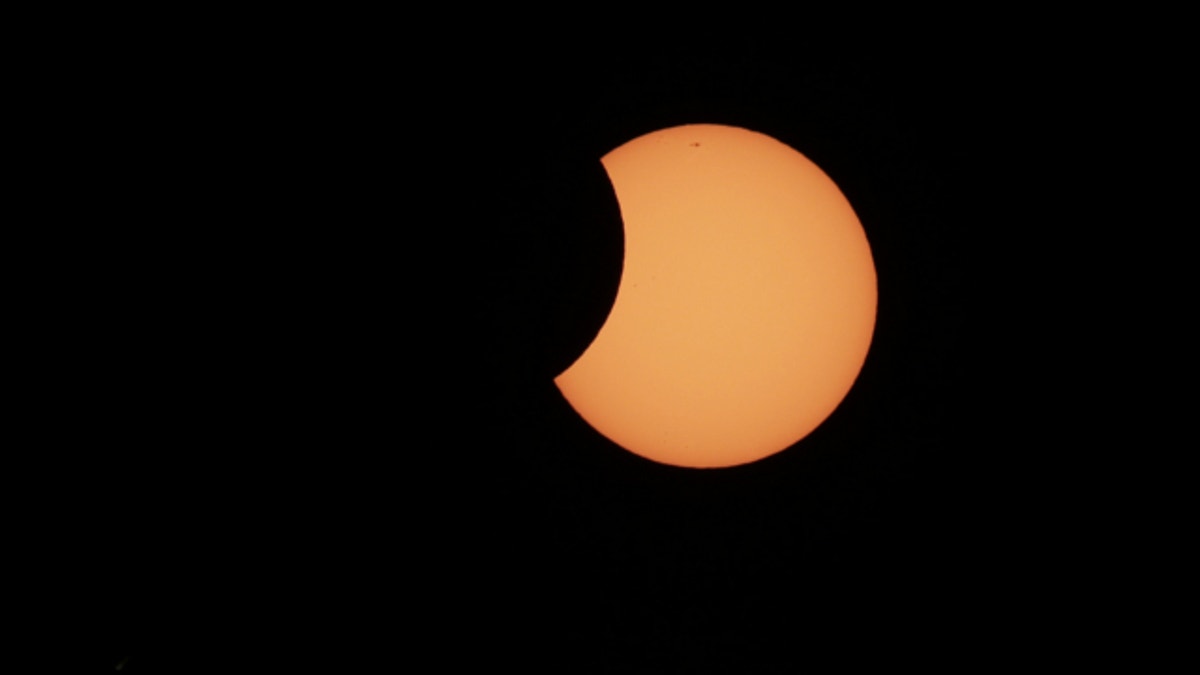
May 10, 2013: The moon begins to cross in front of the sun during a partial solar eclipse in Sydney. (AP)
SYDNEY – Skygazers across the Australian Outback were among the lucky few to witness a solar eclipse on Friday as the moon glided between the Earth and the sun, blocking everything but a dazzling ring of light.
The celestial spectacle, known as a "ring of fire" eclipse, is the second solar eclipse visible from northern Australia in six months. In November, a total solar eclipse plunged the country's northeast into darkness, delighting astronomers and tourists who flocked to the region from across the globe to witness it.
Friday's eclipse, also called an annular solar eclipse, is not considered as scientifically important or dramatic as November's, because the moon is too far from Earth — and therefore appears too small — to completely black out the sun. Unlike a total solar eclipse, which essentially turns day into night, an annular eclipse just dims the sunlight.
"A total eclipse is overall far more spectacular, far more emotional," said Andrew Jacob, an astronomer at Sydney Observatory. Still, he said, Friday's eclipse "will give you a nice ring of sunlight in the sky — it will be quite different."
At remote outposts across Australia, scientists and spectators gathered to watch as the eclipse began casting its approximately 200-kilometer-wide (120-mile-wide) shadow at dawn over Western Australia, before moving east through the Northern Territory and the top of Queensland state. The shadow will then drift across Papua New Guinea, the Solomon Islands, the tiny island nation of Kiribati and eventually end in a largely uninhabited area of the Pacific Ocean.
The eclipse lasted between three and six minutes, depending on its location, and blacked out around 95 percent of the sun at its peak. A partial eclipse was visible to people in other parts of Australia, Indonesia, New Zealand and the South Pacific.
U.S. astronomer Jay Pasachoff, who traveled to Australia to view his 57th solar eclipse, planned to watch from a remote vantage point in the desert about 50 kilometers (30 miles) north of the Outback town of Tennant Creek. The spot was expected to provide the ultimate view in Australia, he said, with the ring of fire visible for four minutes and 20 seconds.
"The most interesting thing about all these eclipses is really to tell students that we can predict these things to a second," said Pasachoff, an astronomy professor at Williams College in Massachusetts. "You can travel halfway around the world and go out into the Outback and ... the moon's going to start darkening the sun right on time."
